Set dramatically among a picture-perfect lake, mountains and hillside vineyards, this unassuming city offers a unique glimpse at how the modern Games came to be.
In the 1890s, when French baron Pierre de Coubertin set about reviving the ancient Greek sporting games first recorded at Olympia in 776 BCE, he thought about following classical precedent and giving his modern Olympics a single permanent location, too. But instead of considering his own birthplace (Paris) or perhaps the world’s most populated city at the time (London) as a potential permanent host city, he imagined staging his modern Games in and around a small Swiss city he had fallen in love with on the shores of Lake Geneva: Lausanne.
Like many past visitors – from Charles Dickens to long-time resident David Bowie – Coubertin fell in love with Lausanne’s dramatic waterside setting framed by craggy Alpine peaks and striking Unesco-inscribed hillside vineyards. Arriving in the city in 1913, Coubertin gushed with enthusiasm for a place he described as “spread out delightfully along the shores of the lake, crowned by forests, provided with every conceivable sporting possibility.”
While others opted to make the revived Games a globetrotting event held in different cities, Coubertin’s passion for Lausanne led him to establish the city as the permanent home of the International Olympic Committee (IOC) two years later in 1915. Following the outbreak of World War One, a beguiling city in neutral Switzerland was seen as a practical (and pretty) choice. The official relocation ceremony took place in 1915 at the 17th-Century City Hall on Place de la Palud, overlooking an atmospheric cobbled square now home to chic shops and weekly markets, watched over by an ornate 16th-Century fountain. Ever since, Lausanne has overseen the Games wherever they are held, and promoted the uplifting principles of the Olympic movement worldwide.
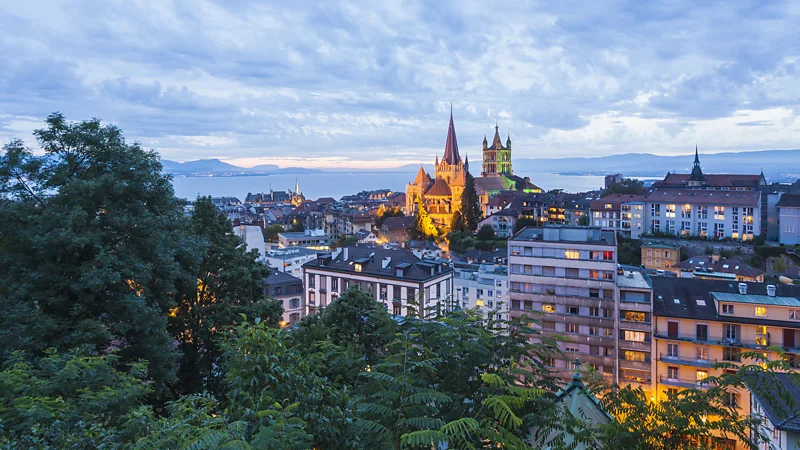
As the 2024 Olympics kick off in Paris, visiting Lausanne offers a unique opportunity to discover how the ancient Games were reborn, and how the modern Olympic movement has sought to blend culture and history alongside sports.
An Olympic welcome
After stepping out of a central train station proudly adorned with the Olympic rings and a declaration of Lausanne’s official status of Olympic Capital, an easy 15-minute walk leads you down to the chic shoreline neighbourhood of Ouchy, where the Olympic Museum‘s gleaming, modern facade faces the mountains across the lake. Classical Greek-style columns flank the entrance to this one-time European Museum of the Year, while surrounding parkland features eye-catching sculptures celebrating specific sports or famed athletes.
Inside, the world’s largest collection of Olympic heritage objects provides a fascinating sporting panoply: reproduced items related to the ancient Games; evocative vintage artefacts (a primitive 1920s bobsleigh, Jesse Owen’s 1936 running shoes); an array of Olympic torches spanning the decades; eye-catching posters for past Games. Giant screens replay memorable sporting episodes, while interactive machines offer visitors a chance to test their own balance, strength and coordination in sporting settings, such as a platform mimicking the moves involved in downhill slalom skiing. One corner highlights Coubertin’s own notable prowess in boxing, fencing, riding, tennis and rowing.
Pulling together the museum’s ever-evolving displays is a global effort. “For each edition of the Games, a team called the Heritage Hunters travels to negotiate donations and collect artefacts. Most of our artefacts are donated – 70% percent in 2023,” said Angelita Teo, director of both the museum and associated Olympic Foundation for Culture and Heritage. “We look at acquiring items with high storytelling potential, which help us share Olympic values, the history and the voices of athletes.”
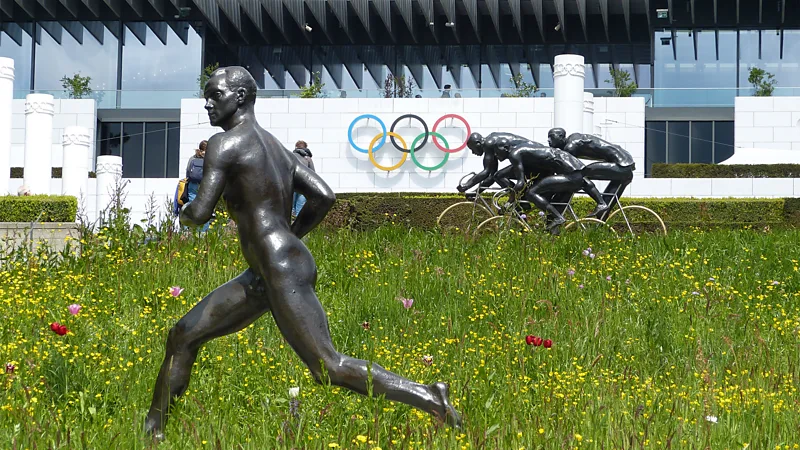
The museum will also be heading to Paris for the 2024 Games, courtesy of an offshoot exhibition entitled SPOT24 beside the Eiffel Tower. “It’s an interactive space that shines a light on six new and urban Olympic sports and disciplines: skateboarding, sport climbing, BMX freestyle, surfing, 3×3 basketball and breaking, and the vibrant cultures surrounding them,” Teo explained.
The birth of Olympism
As well as discussing athletic physiology and psychology, Lausanne’s 1913 Olympic Congress (where those in the Olympic movement both planned events and discussed key underlying principles of the Games) was complemented by a cultural programme including a floating Venetian fete and local choir performances which exemplified the ideal unification of sport, culture and education that Coubertin dubbed Olympism.
The Congress itself took place in the grand Renaissance-style Palais de Rumine, which has morphed into an atmospheric free history museum on Place Riponne, a square now served by a metro station named Riponne-Maurice Bejart after the dancer whose illustrious ballet company provides a perfect contemporary fusion of artistry and athleticism at Lausanne’s grand Beaulieu Theatre.
A stone’s throw away from Place Riponne, travellers can test their own athleticism on the Escaliers du Marché, a striking series of medieval covered wooden stairs leading up to the Gothic Cathedral de Notre Dame that dominates an enclave of cobbled streets and grand buildings and has grandstand views over the rooftops to the lake and mountains beyond.
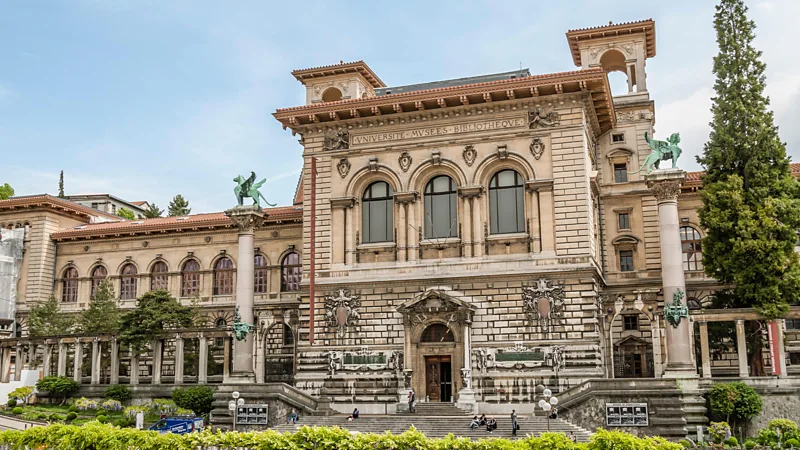
Given the importance of diverse arts and culture [inclusivity is a key principle of Olympism, so worth highlighting that here] to Coubertin’s big idea of Olympism, he would have likely been impressed by how another historic villa near the Bejart Ballet now hosts the inspiring Collection de L’Art Brut, one of the world’s leading museums dedicated to art brut (or as art historians have dubbed it, “raw art.” This unique collection provides a thought-provoking complement to the contemporary art, design and photography museums clustered together to create the Plateforme 10 complex located beside the central station.
When Coubertin made Lausanne the home of the International Olympic Committee in 1915, its headquarters were set up at the beautiful Casino de Montbenon, near the city’s current hipster enclave, Flon. This monument of Olympic history is now home to an excellent brasserie, fronted, as in Coubertin’s time, by a formal garden terrace with sweeping lake and mountain views.
Along the lake shore, a long javelin throw from the Olympic Museum, the Chateau d’Ouchy is another of Lausanne’s many important Olympic sites, and it happens to be set beside a little harbour from where a unique fleet of gorgeous vintage paddle steamers depart for lake cruises.
Wrapped around a 13th-Century tower that reflects its past role as a fortress, the chateau today is a grand luxury hotel. But in 1926 it hosted the conference where Coubertin underlined key tenets of the modern Olympic movement, such as the “right to sports” and the “right to access of general culture.” The hotel’s quayside restaurant serves up even more stellar lake and mountain views, as well as excellent versions of traditional Swiss dishes, like grilled veal paillard with confit lemon butter or perch fillets from the lake outside, and superb Swiss white wine made from Chasselas grapes from the neighbouring Lavaux vineyards.
The picture-perfect setting that Coubertin so admired underpins Lausanne’s sports-loving DNA. It’s the headquarters of more than 40 international sports organisations and federations, and thanks to its high sports participation rate among residents and the city’s athletic infrastructure, Lausanne is regularly listed as one of the world’s leading Sports Cities.
The vast liquid expanse of Lake Geneva, for example, provides a watery arena for various sailing and rowing clubs, which have honed the skills of local Olympians bound for Paris 2024, such as sailor Maud Jayet and rower Barnabé Delarze.
The jagged Alpine peaks surrounding the city offer athletes ice- and snow-based training, while the city’s hills, woods and shore offer a wonderful backdrop for runners – though the city’s steep inclines also feed Swiss jokes about how Lausanners generally have the best legs in the country.
Two kilometres north of the Chateau d’Ouchy, Olympic history buffs should look for a hilltop park near the Bessieres metro station. Mon Repos was the 18th-Century mansion where Coubertin lived and worked during the 1920s and ’30s – and where the IOC relocated in 1922 when it outgrew the Casino de Montbenon. It was at Mon Repos where Coubertin also began gathering Olympic artefacts that provided the seeds of today’s museum in Ouchy. Though visitors can no longer go inside the villa, you can still wander the surrounding landscaped park, home to regular free summer events, such as the annual Lausanne Garden Parties programme of concerts, screenings and other cultural offerings.
Back beside the lake, Chateau d’Ouchy is the start of a 3.5km promenade along a wooded shoreline to the leafy suburb of Vidy, a stroll that comes with ample opportunity to pause at waterside bars and diners, or take a bracing swim from tiny sandy beaches dotting the shoreline.
Set back from the shore at Vidy, the 18th-Century Chateau de Vidy became yet another headquarters for the IOC in 1968 after the IOC outgrew Mon Repos. The organisation has since moved next door into a modern building whose futuristic grass-covered glass-and-steel curves provide sharp contrast to the adjacent chateau, as well as the nearby ancient ruins from the city’s former time as the Roman lakeside settlement of Lousonna. If you’d like to find out more, the city’s Roman Museum is just a few minutes’ walk inland.
The Chateau de Vidy is a fitting setting for one final stop along Lausanne’s Olympic-inspired trail. Vidy is Coubertin’s final resting place, and he is buried in the gorgeous Cemetery Bois-du Vaux just behind the Roman Museum, near the grave of a very different local A-lister, fashion designer Coco Chanel. Unlike her more grandiose tomb, Coubertin’s grave is marked with a simple stone memorial – adorned with the Olympic rings symbolising the legacy a French baron gave to Lausanne, and the world.
Source: BBC



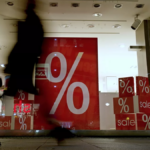



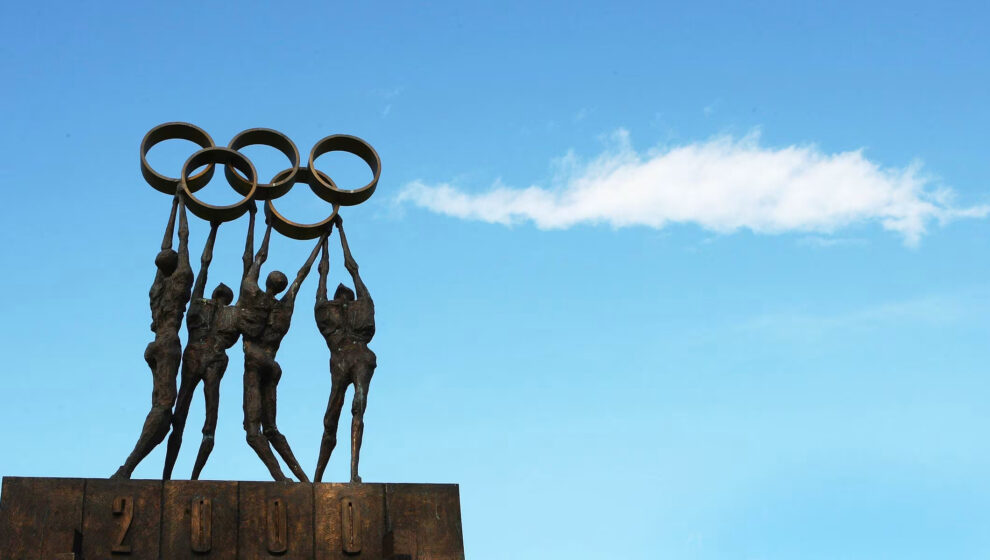









Add Comment